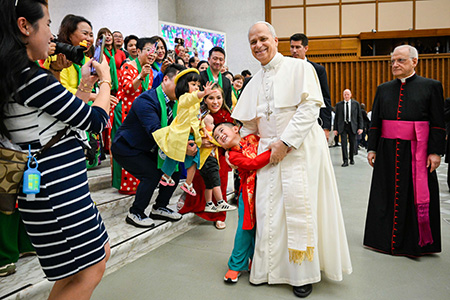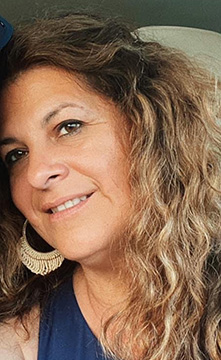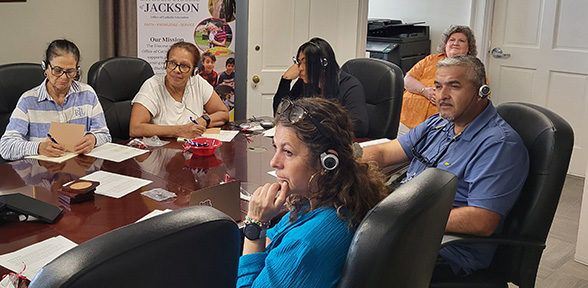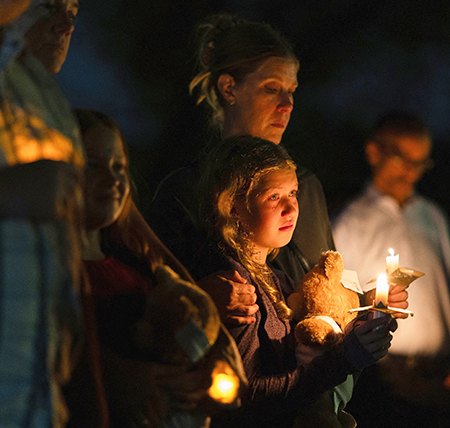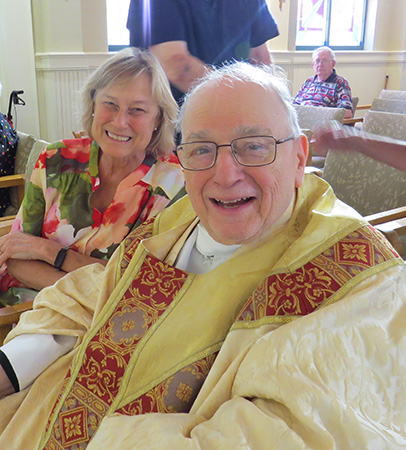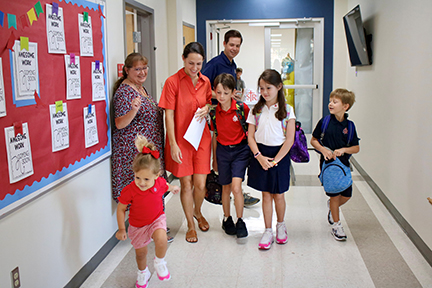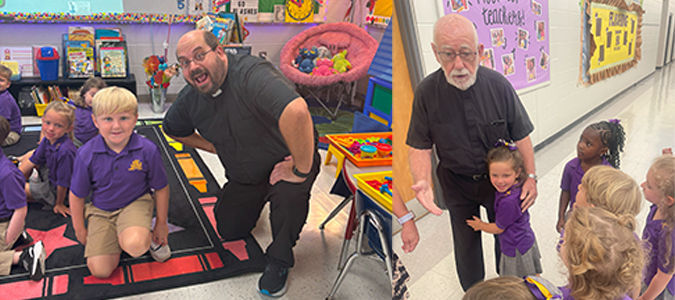Por Obispo Joseph R. Kopacz, D.D.
El miércoles 3 de septiembre, en una inspiradora reunión de fe y tradición, la Arquidiócesis de Mobile celebró la instalación del Reverendísimo Mark S. Rivituso como el tercer arzobispo y el décimo obispo de Mobile. La Diócesis de Jackson, junto con las diócesis de Biloxi y Birmingham, que incluye la Provincia de Mobile con la arquidiócesis.
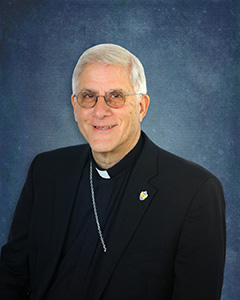
Durante la misa, los obispos Louis Kihneman, Steven Raica y yo nos colocamos estuvieron al frente y al centro del santuario como signo de unidad y fraternidad. Los fieles y el clero desde Mobile hasta St. Louis, el hogar del arzobispo Rivituso, llenaron la Catedral de la Inmaculada Concepción.
El arzobispo Thomas J. Rodi, ahora emérito, dio la bienvenida oficial a la asamblea desde el principio y compartió una historia fascinante de la Arquidiócesis de Mobile que incluyó vínculos con la Arquidiócesis de St. Louis. Al final de la liturgia, la congregación aplaudió de pie al arzobispo Rodi por sus 17 años de dedicación como pastor. Que disfrute del buen fruto de la jubilación bajo la mirada amorosa de Dios.
Después del arzobispo Rodi, el cardenal Christophe Pierre, nuncio apostólico en los Estados Unidos, extendió un cálido saludo en nombre del Papa León XIV, a quien el cardenal representa ante todas las diócesis y arquidiócesis del país. Luego leyó la bula papal, el documento de la Santa Sede que hizo oficial el nombramiento del arzobispo Rivituso.
La bula anuncia dramáticamente al papa como el “Siervo de los Siervos de Dios”, un título adoptado por primera vez por Gregorio Magno en el año 590 d.C. El 3 de septiembre fue el día de la fiesta de este notable pastor y doctor de la iglesia. Este fue sin duda un momento de divina providencia para el nuevo arzobispo al emprender su ministerio, pidiendo la intercesión de San Gregorio y de todos los santos.
En su homilía y palabras de clausura, el Arzobispo Rivituso expresó con alegría su gratitud por el honor y el regalo que se le otorgó para servir en su nuevo hogar en la iglesia de Mobile.
Durante mis 11 años y medio como obispo de Jackson, he tenido la bendición de ser un obispo concelebrante en la consagración e instalación del obispo Kihneman en Biloxi, la instalación del obispo Raica en Birmingham y ahora la instalación del arzobispo Rivituso. Estos son buenos recuerdos que son cargados por los ríos del tiempo.
Este evento sagrado en la Arquidiócesis de Mobile tiene un significado personal adicional para mi ministerio. El 16 de septiembre, cumplo 75 años, cuando todos los obispos activos deben presentar su carta de renuncia al Papa. Aunque la renuncia puede ser aceptada inmediatamente en casos urgentes, la secuencia habitual es una extensión del ministerio por uno o dos años más. Sin embargo, es un hito en el tiempo que requiere una acción irrefutable de un obispo.
Lo que sigue es mi carta al Santo Padre:
Su Santidad,
El 16 de septiembre de este año, cumpliré 75 años. Cumpliendo con la sabiduría de la iglesia contenida en el Código de Derecho Canónico, presento mi carta de renuncia. Por supuesto, continuaré sirviendo al Señor Jesús y a su iglesia sin reservas como ordinario hasta que se me indique lo contrario, o hasta el día en que mi sucesor sea elegido y ocupe el puesto como el 12º obispo de la Diócesis de Jackson.
Doy gracias a nuestro Dios amoroso por vuestro ministerio apostólico como sucesor de san Pedro en el primer año de vuestro pontificado durante este jubileo de la esperanza. Que el Señor siga bendiciendo y prosperando vuestro ministerio Petrino durante muchos años más.
Sinceramente suyo en Cristo,
+Joseph R. Kopacz
Obispo de Jackson
De hecho, algunos cumpleaños son más significativos que otros. De una manera contraria a la intuición, hay una sensación de libertad en no saber cuándo se aceptará la renuncia. “Por tanto, velad, porque no sabéis el día ni la hora” (Mateo 25:13) es la sabiduría del Señor Jesús en los Evangelios.
Esta es la espiritualidad familiar del Adviento: una bendición y un recordatorio de que el don del tiempo es finito, y el trabajo en la viña del Señor espera con el amanecer de cada nuevo día.

